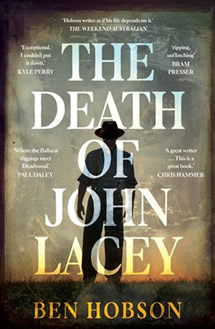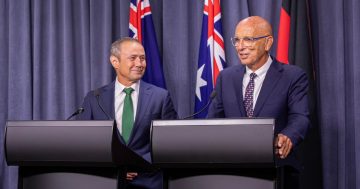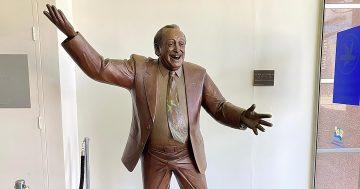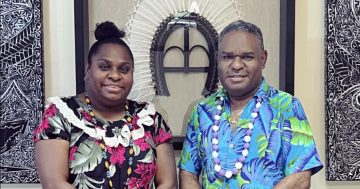Reviewed by Robert Goodman.
By Ben Hobson, Allen and Unwin.
 The Australian western is having a bit of a renaissance and is, at the same time being reinvented. The modern Australian western seeks to question the mythology on which the country was built. It eschews the plucky settler narrative for something darker, particularly exploring the destructive effects of colonisation on Aboriginal Australians. Some recent examples include books like Paul Howarth’s Only Killers and Thieves and movies like The Proposition and The Furnace. In his third novel, The Death of John Lacey, Ben Hobson layers a particular era of colonisation on top of this – the gold rush and the unseemly and violent pursuit of material wealth.
The Australian western is having a bit of a renaissance and is, at the same time being reinvented. The modern Australian western seeks to question the mythology on which the country was built. It eschews the plucky settler narrative for something darker, particularly exploring the destructive effects of colonisation on Aboriginal Australians. Some recent examples include books like Paul Howarth’s Only Killers and Thieves and movies like The Proposition and The Furnace. In his third novel, The Death of John Lacey, Ben Hobson layers a particular era of colonisation on top of this – the gold rush and the unseemly and violent pursuit of material wealth.
The book opens with its eponymous death, readers immediately get a glimpse of the character of John Lacey who, as he dies regrets that he had not been violent enough. The narrative then shifts to the life of a very different character – ten year old Ernst Montague, growing up on a remote farm. Through Ernst, Hobson starts to draw out themes around the settler engagement with local Aboriginal tribes. Ernst’s mother stays inside her house, living in fear, while his father develops a relationship with the local Aboriginal people, although one that is ultimately exploitative. The next section moves to the Ballarat goldfields and a young John Lacey and his brother Gray who plan to set up a store. But John has gold fever and kidnaps an Aboriginal boy to help him find his own, secret seam of gold. These stories of the Laceys and the Montagues collide violently seventeen years later in a small town run by Lacey and his cronies, the action mainly seen through the eyes of the new local priest.
Hobson’s style is very reminiscent of another author who famously reinvented the western – Cormac McCarthy, down to the lack of punctuation marks for dialogue. Hobson’s Snake Island had a similar style in a more contemporary setting, and also had a McCarthy-esque tone to it. And as with McCarthy, Hobson is interesting in exposing abiding Australian mythologies that have grown up around that time. Far from the myth of the noble uprising of miners associated with the Eureka Stockade, this is a more realistic story of exploitation and violence, driven by avarice and lust for power. It is a story of the wealthy dictating terms and of the dispossession of the traditional owners of the land by pastoralists and gold miners.
There is too much going on in The Death of John Lacey – a narrative that spans thirty years and revolves around three very different characters. So that the whole feels a little too episodic, with too much detail in some respects and not enough (if any) detail in others. But for those who can deal with the relentless violence and mostly irredeemable protagonists, it is Hobson’s mythbusting exploration of that time and place in Australian history that will make The Death of John Lacey worth the journey.
Over 900 more book reviews can be found on Pile by the Bed.









